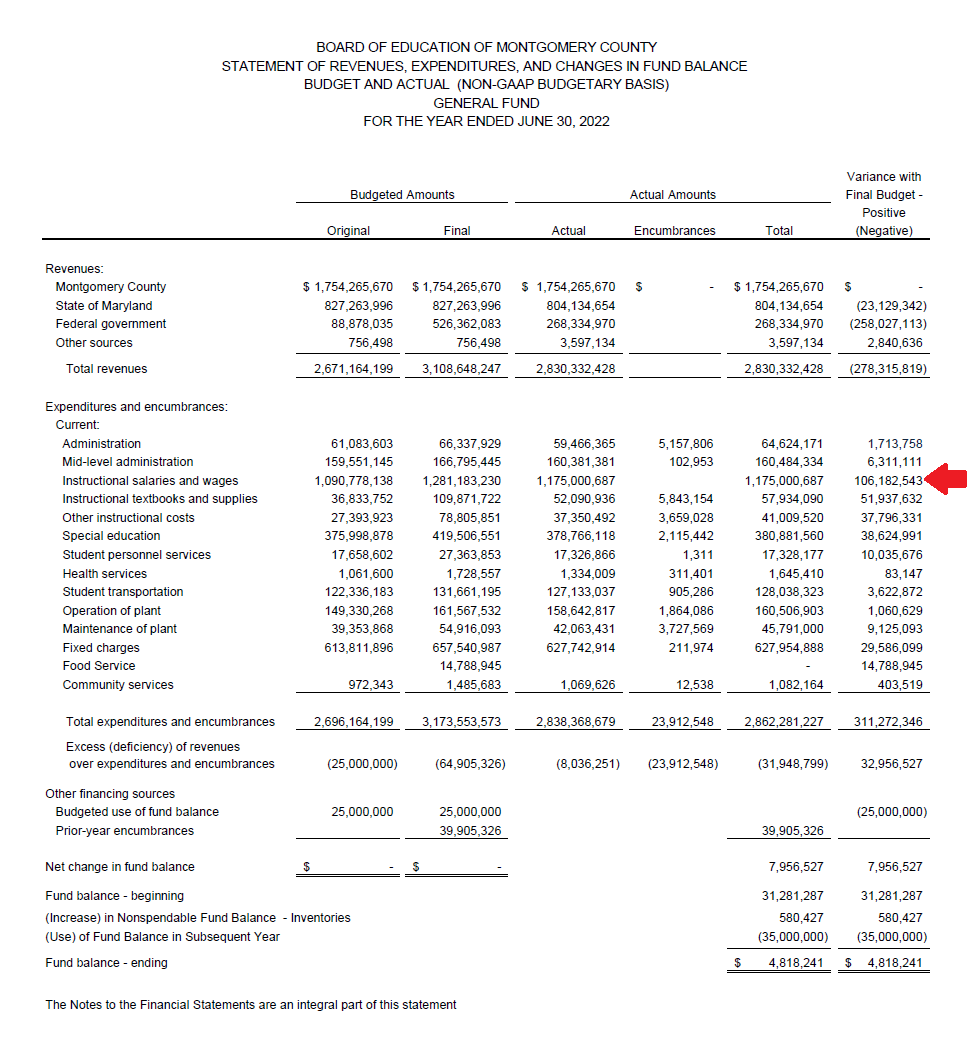By Adam Pagnucco.
In Part One, we examined the basics on MCPS’s operating budget in preparation for answering one question: what happens to teacher salary money after it is approved? Let’s find out.
Instructional salaries are the largest single component of MCPS’s operating budget, accounting for roughly 40% of its spending. In FY22, MCPS paid $1.07 billion in salaries and wages for 12,424 full-time equivalent positions, the overwhelming majority of whom were teachers. This funding is at the heart of MCPS’s institutional mission.
What happens to this money?
Among the voluminous information contained in MCPS’s comprehensive annual financial reports (CAFRs) are original budgets, final budgets and actual spending by state category, including instructional salaries. Terms on budgets and actuals are defined by the Governmental Accounting Standards Board. Original budgets represent the first approved budget before the fiscal year begins. Final budgets include changes to original budgets during and after the fiscal year. Actual spending is a tally of what happened, which is reported after the fiscal year ends and the books are closed. Comparison of these three figures reveals the difference between what a governmental entity was authorized to do and what it actually did.
The table below shows the original budget, final budget and actual spending on instructional salaries from MCPS’s CAFRs from FY04 through FY22.

Over the past two decades, MCPS has never fully spent its entire authorized amount on instructional salaries. For most of this period, the variance was 2 percent or less of final budget. But starting in FY15, the variance began to mushroom in both absolute dollars and as a percentage of final budget. In FY22, MCPS spent $106 million less on instructional salaries than was contained in its final budget, a variance of 8.3%.

MCPS’s Statement of Revenues, Expenditures and Changes in Fund Balance from its FY22 CAFR, page 40.
FY22 was an unusual year and instructional salaries – as with the rest of MCPS’s budget – were no doubt impacted by a big shortfall in expected federal revenues. But the issue is not confined to any one year – it’s the culmination of a trend going back seven years. We will learn more about what happens to instructional salaries in Part Three.
